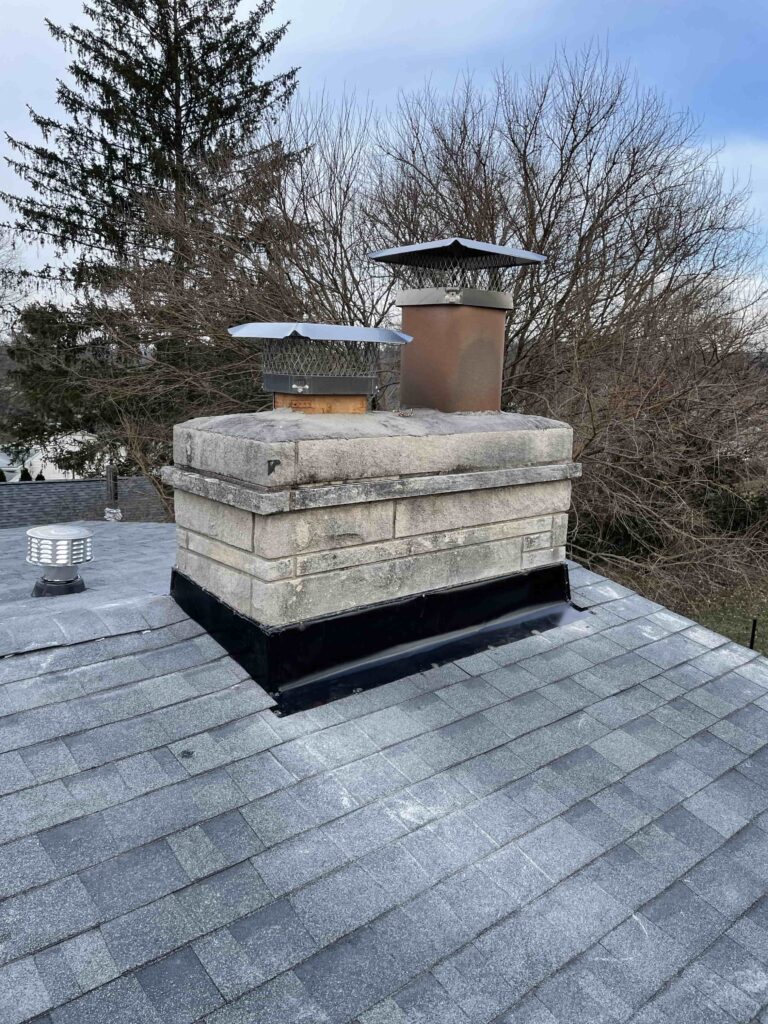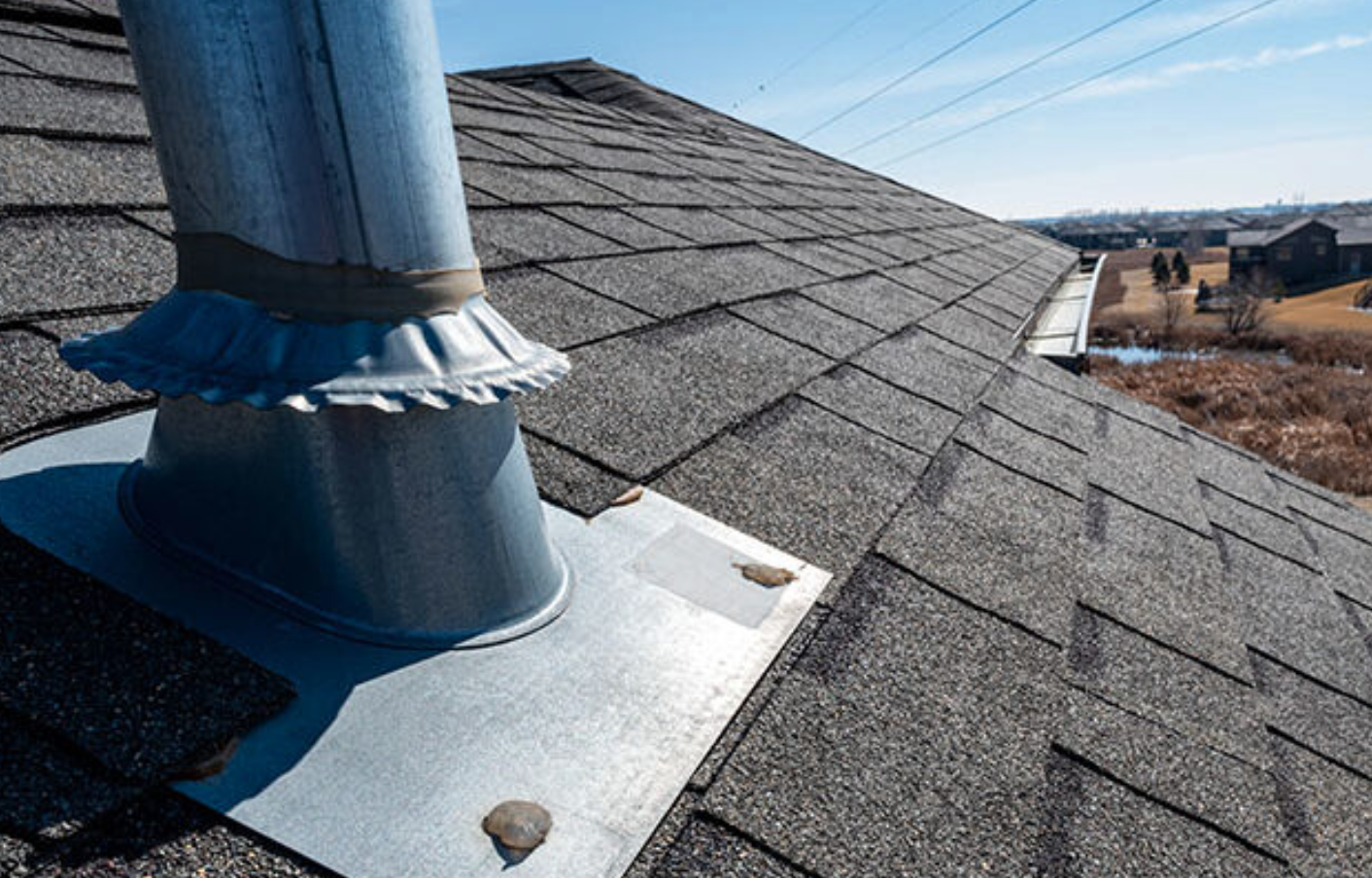After particular bad rain storms, you might have noticed water dripping inside your home. Perhaps, this is even happening constantly in small dribbles. If this is happening to your home, know there is something potentially wrong with your chimney system. We recommend that you contact a roofing specialist immediately. Common issues with chimney leaks include flashing issues, chimney liner issues, etc.
Find the Source of the Problem
One of the reasons that you need to contact a roofing contractor is to help find the source of the issue. It can be hard to pinpoint the source of the issue, even a professional might find it tricky and have to try different approaches to find the source of the problem. Additionally, there could be more than one area of damage where the water is coming in from, making the job harder. As you can tell, the solution molds depending on the type of problem.
One thing that is certain, a complete and thorough inspection is necessary. Especially if the problem persists. Normally, we perform a water test on these type of hard to find issues. A water test is a fancy term for pouring water directly on the area of damage. Afterwards, the inspector looks to the areas in order to determine the source of the issue. From gaps made over time, to regular wear and tear or even badly made installations, the inspector will be able to let you know what the problem at hand is.
What Could the Issue Be?
Like we stated above, there could be different things going on. Over the years and after many different weather type conditions, things start to take a toll. For chimneys, wear and tear takes form in:
- Crown damage
- Regular structural damage
- Issue with its lining
- Sagging or rotten areas surrounding the area itself
- Roof leaks near
Any or even two of these type of damages can show up. The solution comes in pinpointing the source of damage entry. While you can do this type of job yourself, we strongly recommend that you consult with a roofing professional first. You do not want to make matters worse, void your roof warranty or get an injury.
Consulting with a roofing inspector gives you leeway into how serious the damage is, a good pricing point for fixing it, and a labor warranty if the issue is not solved or persists. Most roofers provide a 2 year labor warranty on repairs. Let’s say that the problem persists, then they are able to return and provide another solution at no charge to you. This is the safest way and most reliable way to fix your problem at hand. Additionally, most inspections are free nowadays, so its worth getting a second pair of eyes.
Why This Needs to be Fixed Right Away
Chimneys are for warm, cozy fires and water is not normal. Do not ignore it! Leaving your chimney(and parts of your home) exposed to water intake leads to damage from built-up moisture. Over time, this moisture can break down or rust materials. Even exposed bricks are not subject to getting damage. These can collapse due to a weakened structure holding it in place. Additionally, exposed parts of your home can lead to bugs or even small critters coming inside and starting nests indoors. We have seen instances of small birds to squirrels and even raccoons nesting in homes.
A fireplace with damages present is also most likely to become clogged. It can be hard to tell that there is any clogging, but it can cause carbon monoxide leaks which is dangerous for everyone in the home.
Now, let’s go into more details over some common issues.
1. Check Your Chimney Cap
Caps are coverings meant to protect and close off the top of your chimney. A good standing chimney cap helps keep rain, debris and potential critters out. The best materials for caps are steel or a copper mesh but there are plenty of options to choose from. Closing on the mesh is the cap that seals it from the outside. Caps are extremely important to keep your chimney healthy, keep unwanted things out and let things out properly. Some of these things that chimney caps allow to exit correctly are: smoke, heat, carbon monoxide and creosote.
If your fireplace does not have a chimney cap or there is damage to your cap, you need to act right away. The first thing to know is what kind of chimney you have. Depending on the size, masonry chimney or factory built ones require different cap sizes, these can vary from 8×8, 13×13, 8×17, and 13×17. We recommend to measure and know the size in order to correctly buy the best cap. We do not recommend to get the new “one size fits all” cap, as in our opinion, these tend not to work as well as other options.
Another recommendation is to have stainless steel caps installed, do not go for a cheaper option! These caps weather all kinds of storms, heat and rain. You need to most durable option with less maintenance.
Some things to remember when installing a chimney cap
- Make sure the measurements are accurate
- Check the mesh size, a good opening is between 3/4 of an inch across or smaller
- Square flues: measure the length and width from the outside of your chimney
- For round flues: measure the diameter from the outside and inside the chimney
- For multiple outlets: measure the height and width of the biggest flue exit first
- Make sure the installation is secure and proper installation is done throughout
- After installation, confirm with your installer that there’s no drafts or minimal drafts
2. Check for cracks on the chimney crown or chimney itself
Chimney crows are located on the top part of the chimney. Over time, cracks or chipped sections start to occur and water starts to seep through. Other parts of the chimney itself are susceptible to the elements and that can tear down the masonry over time. Once water gets through it makes its way into the flue. You can notice there are issues during heave rainstorms. We recommend that as soon as you notice any water coming in, to fix this right away. Big cracks start out as tiny ones and expand over time.
If the problem is caught right away, a good coating material can save the masonry and stop the advancement of the cracks. However, if there is substantial damage, a contractor will have to remove the current masonry and relay it.
Be wary of the season when this happens. During winter months, water can freeze between these open spots, thaw and freeze over again, causing the cracks to expand each time and open these wider.
3. Lining Issues
Every brick and mortar chimney should have a lining, usually made of clay, inside it that protects the masonry from the smoldering heat made inside. Liners not only protect, they also help ventilate the chimney. Over many usages however, the lining begins to chip or crack. This can lead to rain water entering through the flue. Replace this lining once its lifespan is up with stainless steel in order to protect the flue. Specialized alloy piping works too.
Not only does replacing the liner help keep your chimney in good standing, it also helps keep the fire at a decent size for the fireplace without spreading outside. Do check if you have one, as it was not a requirement before and older homes might not have one at all.
4. Leaks starting from the inside out
Sometimes, the problem starts with the gas fumes from a fireplace. These fumes are a lower temperature and create lots of moisture. The larger the chimney, the longer it takes for it to dry. So, these gas fumes start to soak the bricks and keep them moist. This moisture not only affects the chimney itself but other areas around it as well. You might start to notice some peeling wallpaper or paint over time.
A chimney line should be able to fix this small issue.
5. Chimney Flash Damage
Flashing goes around your chimney and prevents water from pooling in through the brick structure. Sealing with caulk and using step-flashing as well, this is the tried and true method for chimney flashing installations.The thing is, over time(or if not having been securely installed) the flashing starts to fail and water starts to make its way inside, usually at the roof bed or attic.
Repairing your flashing should be done by professionals with long time expertise. If it was determined that the source of the issue is due to the flashing then its best to remove it and put in new one. The installer will have to remove some shingles around it too. This repair is not expensive and also necessary as more water comes in, more parts of your roof can get ruined.
6. Chimney leaks that are not actually the problem
If you are susceptible to thinking the chimney is your issue, it might come as a surprise that a leak can start at a different place on your roof and make its way to your chimney. This is why roofers do water tests first.
Although easy to assume that the chimney is the issue, if you’re not a 100% sure, ask the roofer to perform a water test. Let’s say you fix what you thought was the issue, then the chimney is still leaking. You then have to call the roofer back a second time since the issue is not resolved. This can then lead to them having to fix another part of your roof until the problem is gone and it can be more costly as now there’s two repairs done.
Got Chimney Leaks? Let’s Fix the Problem
We recommend that as soon as you see water coming in, to call an experienced roofer right away. Getting to the root of the problem is the first step to stop it from getting worse or spreading. The team at Oscar Roofing can help! We inspect all roofs, skylights, boots and everything that is on your roof.
Whether its a flashing issue or structural, we can help. The right team is able to inspect your home and accurately determine the cause of damage. Therefore, Contact Oscar Roofing today for your complimentary estimate. No job is too big or small for us and we are glad to help out our fellow Hoosiers.




